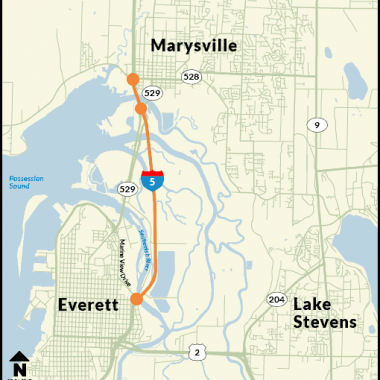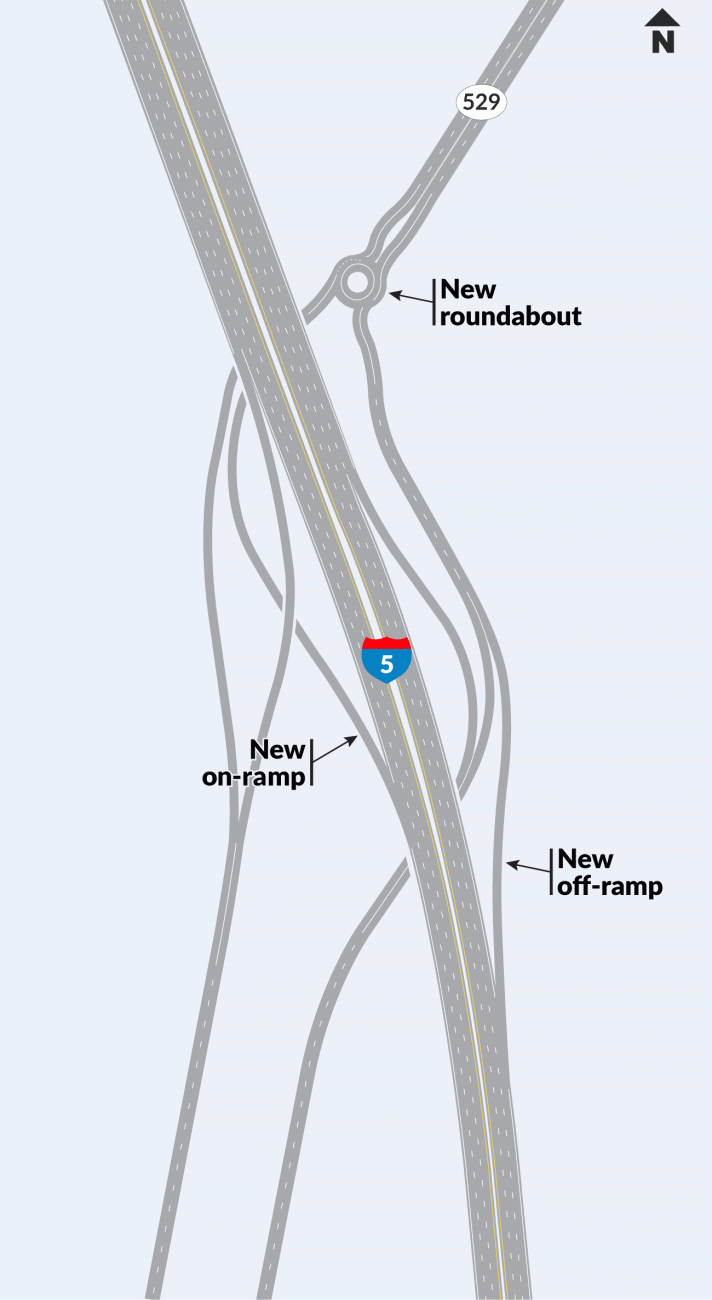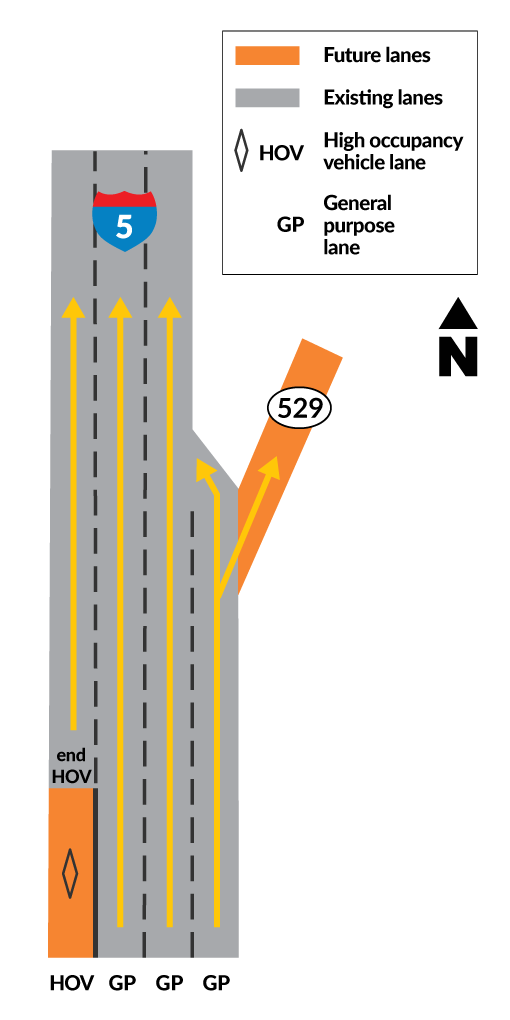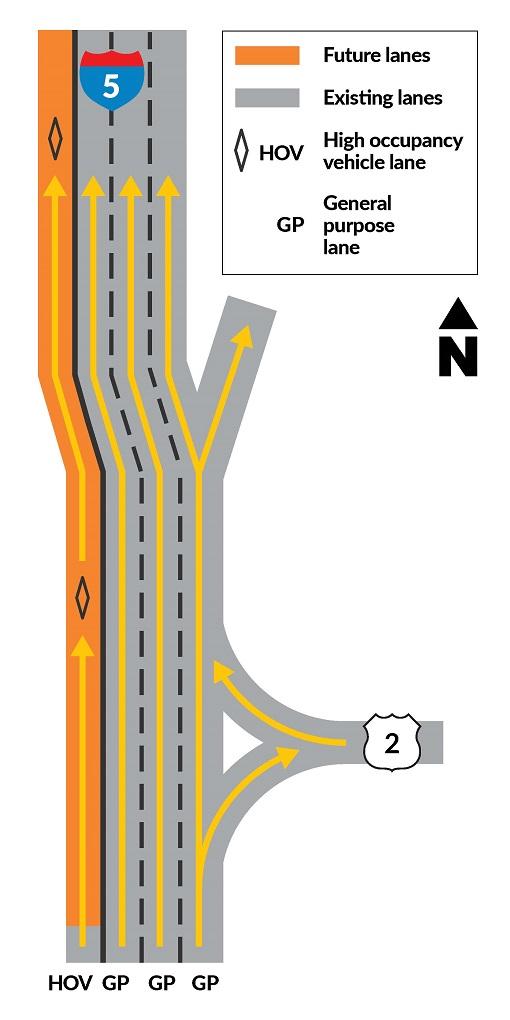The northbound I-5 off-ramp to Marine View Drive and the two right lanes of the freeway will be closed nightly from 9:30 p.m. to 4:30 a.m. Tuesday, April 15, and Wednesday, April 16, for road work.
Project overview
To address congestion at the I-5/SR 528 interchange and on I-5 between Everett and Marysville, WSDOT will build a new roundabout at the I-5/SR 529 interchange, add new ramps from I-5 northbound to SR 529 and SR 529 to southbound I-5, and extend the I-5 northbound HOV lane from near US 2 to SR 529.
What to expect
The northbound I-5 HOV lane extension from Pacific Avenue in Everett to the Steamboat Slough Bridge in Marysville has opened. This portion of northbound I-5 now has three general purpose lanes in addition to the HOV lane.
The lanes of I-5 have been shifted between Marysville and Everett for construction, which will continue through spring 2025. People traveling between Everett and Marysville northbound and southbound on I-5 or SR 529 should plan for nighttime lane reductions between 9 p.m. and 8 a.m.
The project will add a roundabout at the I-5/SR 529 interchange, a northbound off-ramp from I-5 to SR 529 and an on-ramp from SR 529 to southbound I-5, and a northbound HOV lane between Marine View Drive in Everett and SR 529 in Marysville.




